LT1 GDI owners
#101
Race Director


Member Since: Jul 2007
Location: Texas Hill Country
Posts: 10,763
Received 2,379 Likes
on
1,238 Posts

suck the water out of the pot with a straw and measure how long it takes.
one is passive, one is active (or positive).
he is saying it is better to retain a Positive Crankcase Ventilation system than to just let the pressure in the crankcase escape through breathers.
under most circumstances this is correct. stock and bolt on applications. if you apply a lot of HP to the system, like with boost (more than an entry level kit) then my position is you can outflow the PCV/catch can setup and retain too much pressure in the crankcase and/or exacerbate pushing oil out.
my other position is that "most" catch cans in a normal environment do not catch enough of anything to make a difference and are pointless but coSpeed2 is saying there is a better can available that makes it worth it.
#102
Melting Slicks


Thread Starter
Boil water in a small pot and measure how long it takes to evaporate.
suck the water out of the pot with a straw and measure how long it takes.
one is passive, one is active (or positive).
he is saying it is better to retain a Positive Crankcase Ventilation system than to just let the pressure in the crankcase escape through breathers.
under most circumstances this is correct. stock and bolt on applications. if you apply a lot of HP to the system, like with boost (more than an entry level kit) then my position is you can outflow the PCV/catch can setup and retain too much pressure in the crankcase and/or exacerbate pushing oil out.
my other position is that "most" catch cans in a normal environment do not catch enough of anything to make a difference and are pointless but coSpeed2 is saying there is a better can available that makes it worth it.
suck the water out of the pot with a straw and measure how long it takes.
one is passive, one is active (or positive).
he is saying it is better to retain a Positive Crankcase Ventilation system than to just let the pressure in the crankcase escape through breathers.
under most circumstances this is correct. stock and bolt on applications. if you apply a lot of HP to the system, like with boost (more than an entry level kit) then my position is you can outflow the PCV/catch can setup and retain too much pressure in the crankcase and/or exacerbate pushing oil out.
my other position is that "most" catch cans in a normal environment do not catch enough of anything to make a difference and are pointless but coSpeed2 is saying there is a better can available that makes it worth it.
And Higgs is also dead on that 99% of "catchcans" will not be able to deal with a big boost build.
That is why these 2 brands largest capacity systems are the next best thing to a vacuum pump. They use 2 separate suction sources for evacuation and flushing, and the check valves will always open and close as needed to switch to the source providing the most suction so you are pulling suction/evacuation of the crankcase VS a tank/vent/breather system that will have to first allow pressure to build and them escape. These also route the clean/fresh side of the engine and the dirty/foul side into the same tank defeating all flushing and removal of the damaging combustion by-products (excellent article in the Jan issue of Vette Magazine on all of this just came out in the "technically speaking" section.)
So, several disadvantages of allowing these compounds to settle and mix with the engine oil. First, if these are not evacuated or removed/flushed from the crankcase as soon as they enter and are still in a gaseous state, they quickly settle and mix with the engine oil contaminating it. The more you run, the more these contaminates accumulate, the more internal engine wear. Remember, your oil filter can only trap down to 15 microns or they would become to restrictive and clog causing the bypass valve to open and no filtration would take place. Most internal engine wear is caused by particles in the 3-7 or so size range so once they enter and mix, they are there to stay until you change oil. When you defeat the critical function of flushing and evacuation of these (either by a working PCV system or a vacuum pump style system), you are now greatly reducing the life of the engine. The best example of this without going into materials, manufacturing processes, etc. is to look back at the pre PCV system engines. Before the Fed's mandated the PCV system (purely for pollution control), and any old timer can verify this, most engines would only go 40-50K miles if that before needing a complete rebuild. (remember cutting the cylinder wear ridges?) And that was with 1500 mile change intervals. Now with those same engines, same oils and filters, in the years following the implementation of the PCV system, started to go 100k-150k miles before needing a rebuild, and the only change was Positive Crankcase Ventilation (or evacuation is more accurate). It was not until studying why this unexpected benefit was occurring that engineers and scientist's discovered just what was occuring during blow-by. They had before this assumed it was just pressure that needed to vented, and when they went deeper they discovered along with this pressure, was a mix of combustion by-products including:
Water, un-burnt fuel, sulfuric acid, and abrasive soot and carbon particles. Just look at your dipstick after an oil change to see how quickly the oil turns dark now with the new GDI engines. This is due to the much improved oil windage issues to help slow the oil ingestion levels from the PCV system, and this has gone as far as they can (even too far) as they are now trapping some of the soot and carbon particles that should be evacuated. That is why the need for a more robust external solution, and it is NOT the average "catchcan" as Higgs and others already know as most are far too small and ineffective in the percentage of compounds trapped as well as unable to deal with the greater evacuation needs of a big boost or big cube stroker engine turning higher RPM's. And thus the new releases by Colorado Speed and Elite Engineering that DO work for these applications and are specifically designed for these, and to use them on a mild build is not over kill with GDI as you want all oil and other compounds trapped and prevented from ingestion.
Now the other reason you want suction pulled on the crankcase VS allowing pressure to first build and then vent, is the piston rings.
The stability of the piston rings is critical, or they can move and "shudder" in the ringland (rings must be able to move laterally for proper seal, this is when they move as not intended) if pressure is allowed to build in the crankcase, or below them.
This is known as "ring flutter", and although is mainly an issue at high RPM's and rarely is very damaging in a daily easy driven vehicle, we tend to "drive spiritedly" in our Corvettes and other babies. So it becomes an issue.
Here is an illustration of what occurs during this:
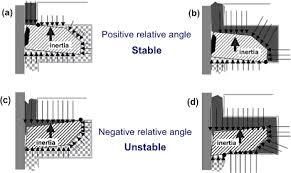
Now without getting into gas ports, etc that also help retain stability or this could get even more lengthy and loose more, as you can see the pressure from the combustion process helps the ring remain stable and seal. When you allow any pressure to first build and then vent, you are maintaining a certain amount of pressure below the rings and they are not designed for this. The result long term is accelerated wear of the rings, lands, and eventually any engine builder has see, the "divots" of uneven wear in the cylinders.
NO racing vents, all run a positive vacuum or suction source except 2 exceptions (just look in the pits next time your at a professional race). Top fuel/Alky due to the enormous pressures with 10-15,000 HP and a total rebuild every run, and basic stock cars due to antiquated rules and "claimer" motors.
Even the most basic budget drag cars run header evacuation systems and most all run a belt driven vacuum pump. So, in summary, two main serious issues with venting have been covered here. And with the price of a new Corvette, why even chance it? The more instability in the rings, the less power produced, the greater the wear rate, and the more blow-by compounding the issue.
There are several other issues we can go into but most should understand this from here. Venting is never good period. With the robust solutions out there, and also, there is so little ACCURATE information out there, and so many have tried standard "catchcans" with horrible results, many make decisions on assumptions and not science. It is all there to find, but so confusing with so much misinformation and then the profit motives of many that don't have the training or understanding on this subject as it has been a few generations of automotive techs not taught it, and only say a pro race shop (NASCAR, NHRA/IHRA Pro Classes, IRL, ALMS, etc. and NOT a great street performance shop as many do excellent quality power builds but do not understand proper crankcase evacuation and all that is involved. Very few do).
Visit say Scott Shafiroff, or Reher Morrison's websites and call and ask the builders why the suction on a crankcase is so critical and just venting is so damaging and counter productive. Then your getting it from some of the most respected in Professional Motorsports.

#103
Safety Car


Well, not to add anything else to fuel the fire but I did add a catch can on my 2016 A8 non Z51 at around 900 miles (the car currently has exactly 1051 miles on it now).
I went with another vendor not the one cospeed is speaking to and can I say I am switching to that style? YES. I am in the middle of putting an eforce supercharger on mine and tonight when I got the intake off I was really shocked at the tubes going down to the valves and already the amount of coking or grime or carbon whatever you want to call it that has built up.
Also I dumped my catch can and about an ounce came out which is just amazing really that amount of oil that quik (ruffly 150 miles if that).
I took a few pics, sorry the quality isn't great its kinda hard to snap a phone pic with a light shooting in there to but trust me its an amazing amount of build up this quik on a car with just 1051 miles on the ticker. pretty crazy deal really. paul

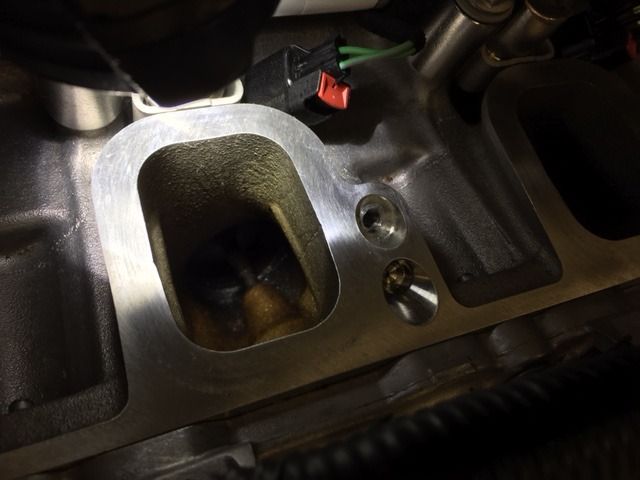
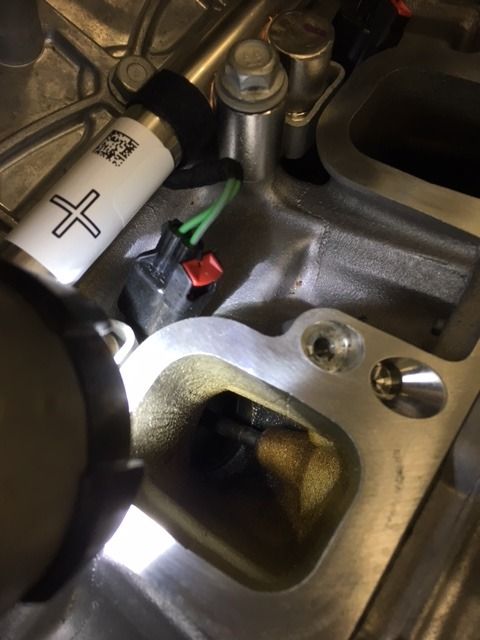
I went with another vendor not the one cospeed is speaking to and can I say I am switching to that style? YES. I am in the middle of putting an eforce supercharger on mine and tonight when I got the intake off I was really shocked at the tubes going down to the valves and already the amount of coking or grime or carbon whatever you want to call it that has built up.
Also I dumped my catch can and about an ounce came out which is just amazing really that amount of oil that quik (ruffly 150 miles if that).
I took a few pics, sorry the quality isn't great its kinda hard to snap a phone pic with a light shooting in there to but trust me its an amazing amount of build up this quik on a car with just 1051 miles on the ticker. pretty crazy deal really. paul



Last edited by HANNY; 11-21-2015 at 08:55 PM.
#105
Team Owner


Member Since: Jan 2007
Location: cookeville tennessee
Posts: 28,846
Received 1,762 Likes
on
1,529 Posts

#106
i stuggle to see how you couldnt have gotten more light in there to take better pictures.
those pictures arent helpping us man.
and if the coking is that bad at 1k miles. Then i guess GM is going to be spending a lot of money on warranty from every GDI engine they make.
those pictures arent helpping us man.
and if the coking is that bad at 1k miles. Then i guess GM is going to be spending a lot of money on warranty from every GDI engine they make.
Last edited by MikeLsx; 11-21-2015 at 11:52 PM.
#107
Melting Slicks


Thread Starter
Look at what you can see, the valve stem. See where it is scrapped down with every cycle up into the guide? That shows enough to see the abrasive deposits if nothing else are causing wear. On warranties, all seem to be shortening the warranty period and most new vehicle owners are not like the Corvette Crowd that is active on forums such as this one and actually have this brought to your attention. 99% of owners will never know what is occurring. And when they are unhappy with the way it runs they will trade for new.
People on forums generally see all sorts of beneficial information on their cars, not just this. The low gear lube fill in the differentials, paint issues, etc. are generally found when browsing the forum. That's part of why these forums are so beneficial.
People on forums generally see all sorts of beneficial information on their cars, not just this. The low gear lube fill in the differentials, paint issues, etc. are generally found when browsing the forum. That's part of why these forums are so beneficial.

#108
Racer


Do you have any pictures of an LT1 with 5, 10 or 15K miles so we can compare and what about pics of an LT1 that has been using a catch can. This will give us some insight to see if a catch can is actually worth it or is coking just something we will have to live with.
#109
Look at what you can see, the valve stem. See where it is scrapped down with every cycle up into the guide? That shows enough to see the abrasive deposits if nothing else are causing wear. On warranties, all seem to be shortening the warranty period and most new vehicle owners are not like the Corvette Crowd that is active on forums such as this one and actually have this brought to your attention. 99% of owners will never know what is occurring. And when they are unhappy with the way it runs they will trade for new.
People on forums generally see all sorts of beneficial information on their cars, not just this. The low gear lube fill in the differentials, paint issues, etc. are generally found when browsing the forum. That's part of why these forums are so beneficial.
People on forums generally see all sorts of beneficial information on their cars, not just this. The low gear lube fill in the differentials, paint issues, etc. are generally found when browsing the forum. That's part of why these forums are so beneficial.

I know what you are going to say. Most customers wont be able to tell that there valves are coked at 30k miles.
Tell me how that is possible when you have a check engine light on, when your MPG drop (because most people care about this).
Thats what i dont understand. it makes no snese that GM would warranty a engine that is screwed that low of miles. Rather its a second owner or not. the warranty is still valid and the buyer still has a mouth to complain.
Last edited by MikeLsx; 11-23-2015 at 04:28 PM.
#110
Melting Slicks


Thread Starter
These engines are not "screwed" just as the previous GDI GM L4 and V6 engines since 2008 have not been. They have issues as all GDI engines do and experience, yet no single automaker in the World has decided to stop selling cars and truck because of these issues. (just as GM continued to sell cars with the ignition switch issues for almost a decade after engineers internally identified the issues and the fix and presented it according to the lawsuits. And that cost a few hundred $million as a result and a few lives). GDI is here to stay, and there is only going forward and not backwards.
GM was forced into adopting GDI as were most others before it to meet CAFE fuel economy standards and increased tail pipe emissions, which they do when new. But after the coking has effected the efficiency and degradation occurs, it is worse than port injection. GM was not about to stop selling vehicles, that would be crazy. Sames as all others.
Mike, you have stated your arguments (all assumptions to date, no actual scientific data or discussions) so again I ask that you please refrain from your constant disruptions attempting to side track this and the other threads. I keep asking you politely. If you can present actual data and discuss this in a technical sense, then your more than welcome, but to keep posting the same "why would GM do this?" arguments it is helping no one trying to actually learn and understand. Just as when someone like HANNY posts actual pictures of each port and valve, you criticize him for not having better light. Please. contribute positively to the thread or I have total respect in you treating your own car as you choose, I did not buy it, so I have no right to keep telling you to do anything different than what YOU choose to do, or going to your own threads and believing whatever you choose. And, I wont interfere with your threads.
This is ONLY for those that DO want to learn and have a intelligent civil discussion.
Go to any Cadillac dealer and visit a senior tech willing to talk "off the record" and see how many of the V6 and L4 GDI engines they do warranty work on. How many 2.0T L4 turbo's from the ATS are blowing up and being replaced. Any Ford center and the same with the Ecoboost GDI V6. ANy BMW, VW, Audi, etc. They all have these issues to work through and all are making huge changes to attempt to alleviate these and move forward, but it is here, it is real, and there are solutions available. Just not from the factory to date.
jdarc1,
Yes, have posted many on GM GDI up to 63k miles with and without. Have yet to have any higher mileage Corvette's with the GDI V8, but the trucks I have posted info and pictures on as well that do with the same basic engine and issues.
And this is the reason for these threads I have started, to get more members involved that DO actually document and remove their intake manifold and show the pictures of what they find. HANNY at 1k miles is the lowest mileage LT1 posted showing it begins as soon as the engine is being operated. ANd then at 5k miles, etc. like others have shown.
Now we need to have a C7 with it installed right at the dealer or just as soon as it is delivered and then inspected at 5,10,15,20k and more miles as the other GM GDI late model engines I have posted pictures of show valves app 40-50% blocking the original valve flow VS a very light coating looking like most do at 2-5k miles but at 63K with the system installed as soon as it left the dealer.
So, the more that can share, and for those installing a system at say 5k miles, perform a manual cleaning at the time as several have done here and shared, so they are also starting with clean deposit free valves.
The one truck that installed at app. 9k miles (a 2014 6.2 GDI) shows his at 20k miles and no more noticeable than he had when he installed the system at 9k miles. But his is not as accurate as if they were first cleaned at the time of installation of the system.

GM was forced into adopting GDI as were most others before it to meet CAFE fuel economy standards and increased tail pipe emissions, which they do when new. But after the coking has effected the efficiency and degradation occurs, it is worse than port injection. GM was not about to stop selling vehicles, that would be crazy. Sames as all others.
Mike, you have stated your arguments (all assumptions to date, no actual scientific data or discussions) so again I ask that you please refrain from your constant disruptions attempting to side track this and the other threads. I keep asking you politely. If you can present actual data and discuss this in a technical sense, then your more than welcome, but to keep posting the same "why would GM do this?" arguments it is helping no one trying to actually learn and understand. Just as when someone like HANNY posts actual pictures of each port and valve, you criticize him for not having better light. Please. contribute positively to the thread or I have total respect in you treating your own car as you choose, I did not buy it, so I have no right to keep telling you to do anything different than what YOU choose to do, or going to your own threads and believing whatever you choose. And, I wont interfere with your threads.
This is ONLY for those that DO want to learn and have a intelligent civil discussion.
Go to any Cadillac dealer and visit a senior tech willing to talk "off the record" and see how many of the V6 and L4 GDI engines they do warranty work on. How many 2.0T L4 turbo's from the ATS are blowing up and being replaced. Any Ford center and the same with the Ecoboost GDI V6. ANy BMW, VW, Audi, etc. They all have these issues to work through and all are making huge changes to attempt to alleviate these and move forward, but it is here, it is real, and there are solutions available. Just not from the factory to date.
jdarc1,
Yes, have posted many on GM GDI up to 63k miles with and without. Have yet to have any higher mileage Corvette's with the GDI V8, but the trucks I have posted info and pictures on as well that do with the same basic engine and issues.
And this is the reason for these threads I have started, to get more members involved that DO actually document and remove their intake manifold and show the pictures of what they find. HANNY at 1k miles is the lowest mileage LT1 posted showing it begins as soon as the engine is being operated. ANd then at 5k miles, etc. like others have shown.
Now we need to have a C7 with it installed right at the dealer or just as soon as it is delivered and then inspected at 5,10,15,20k and more miles as the other GM GDI late model engines I have posted pictures of show valves app 40-50% blocking the original valve flow VS a very light coating looking like most do at 2-5k miles but at 63K with the system installed as soon as it left the dealer.
So, the more that can share, and for those installing a system at say 5k miles, perform a manual cleaning at the time as several have done here and shared, so they are also starting with clean deposit free valves.
The one truck that installed at app. 9k miles (a 2014 6.2 GDI) shows his at 20k miles and no more noticeable than he had when he installed the system at 9k miles. But his is not as accurate as if they were first cleaned at the time of installation of the system.

#111
These engines are not "screwed" just as the previous GDI GM L4 and V6 engines since 2008 have not been. They have issues as all GDI engines do and experience, yet no single automaker in the World has decided to stop selling cars and truck because of these issues. (just as GM continued to sell cars with the ignition switch issues for almost a decade after engineers internally identified the issues and the fix and presented it according to the lawsuits. And that cost a few hundred $million as a result and a few lives). GDI is here to stay, and there is only going forward and not backwards.
GM was forced into adopting GDI as were most others before it to meet CAFE fuel economy standards and increased tail pipe emissions, which they do when new. But after the coking has effected the efficiency and degradation occurs, it is worse than port injection. GM was not about to stop selling vehicles, that would be crazy. Sames as all others.
Mike, you have stated your arguments (all assumptions to date, no actual scientific data or discussions) so again I ask that you please refrain from your constant disruptions attempting to side track this and the other threads. I keep asking you politely. If you can present actual data and discuss this in a technical sense, then your more than welcome, but to keep posting the same "why would GM do this?" arguments it is helping no one trying to actually learn and understand. Just as when someone like HANNY posts actual pictures of each port and valve, you criticize him for not having better light. Please. contribute positively to the thread or I have total respect in you treating your own car as you choose, I did not buy it, so I have no right to keep telling you to do anything different than what YOU choose to do, or going to your own threads and believing whatever you choose. And, I wont interfere with your threads.

GM was forced into adopting GDI as were most others before it to meet CAFE fuel economy standards and increased tail pipe emissions, which they do when new. But after the coking has effected the efficiency and degradation occurs, it is worse than port injection. GM was not about to stop selling vehicles, that would be crazy. Sames as all others.
Mike, you have stated your arguments (all assumptions to date, no actual scientific data or discussions) so again I ask that you please refrain from your constant disruptions attempting to side track this and the other threads. I keep asking you politely. If you can present actual data and discuss this in a technical sense, then your more than welcome, but to keep posting the same "why would GM do this?" arguments it is helping no one trying to actually learn and understand. Just as when someone like HANNY posts actual pictures of each port and valve, you criticize him for not having better light. Please. contribute positively to the thread or I have total respect in you treating your own car as you choose, I did not buy it, so I have no right to keep telling you to do anything different than what YOU choose to do, or going to your own threads and believing whatever you choose. And, I wont interfere with your threads.

I have just done research and collected data from others who have collected data. everyone says carbon build up isnt noticeable until you have some miles. Not a 5k. even if you see carbon, its not enough to cause problems.
It seems that Europe has gone GDI, and the US is going GDI. Of course the dodge hemi, and ford mustang v8 doesn't have GDI.
I would tell everyone to just buy European, but they are GDI also. the time to lease cars hasnt been so important.
Last edited by MikeLsx; 11-24-2015 at 03:23 PM.
#112
Pro


Mike, you have stated your arguments (all assumptions to date, no actual scientific data or discussions) so again I ask that you please refrain from your constant disruptions attempting to side track this and the other threads. I keep asking you politely. If you can present actual data and discuss this in a technical sense, then your more than welcome, but to keep posting the same "why would GM do this?" arguments it is helping no one trying to actually learn and understand. Just as when someone like HANNY posts actual pictures of each port and valve, you criticize him for not having better light. Please. contribute positively to the thread or I have total respect in you treating your own car as you choose, I did not buy it, so I have no right to keep telling you to do anything different than what YOU choose to do, or going to your own threads and believing whatever you choose. And, I wont interfere with your threads.
This is ONLY for those that DO want to learn and have a intelligent civil discussion.
Go to any Cadillac dealer and visit a senior tech willing to talk "off the record" and see how many of the V6 and L4 GDI engines they do warranty work on. How many 2.0T L4 turbo's from the ATS are blowing up and being replaced. Any Ford center and the same with the Ecoboost GDI V6. ANy BMW, VW, Audi, etc. They all have these issues to work through and all are making huge changes to attempt to alleviate these and move forward, but it is here, it is real, and there are solutions available. Just not from the factory to date.
jdarc1,
Yes, have posted many on GM GDI up to 63k miles with and without. Have yet to have any higher mileage Corvette's with the GDI V8, but the trucks I have posted info and pictures on as well that do with the same basic engine and issues.
And this is the reason for these threads I have started, to get more members involved that DO actually document and remove their intake manifold and show the pictures of what they find. HANNY at 1k miles is the lowest mileage LT1 posted showing it begins as soon as the engine is being operated. ANd then at 5k miles, etc. like others have shown.
Now we need to have a C7 with it installed right at the dealer or just as soon as it is delivered and then inspected at 5,10,15,20k and more miles as the other GM GDI late model engines I have posted pictures of show valves app 40-50% blocking the original valve flow VS a very light coating looking like most do at 2-5k miles but at 63K with the system installed as soon as it left the dealer.
So, the more that can share, and for those installing a system at say 5k miles, perform a manual cleaning at the time as several have done here and shared, so they are also starting with clean deposit free valves.
The one truck that installed at app. 9k miles (a 2014 6.2 GDI) shows his at 20k miles and no more noticeable than he had when he installed the system at 9k miles. But his is not as accurate as if they were first cleaned at the time of installation of the system.

This is ONLY for those that DO want to learn and have a intelligent civil discussion.
Go to any Cadillac dealer and visit a senior tech willing to talk "off the record" and see how many of the V6 and L4 GDI engines they do warranty work on. How many 2.0T L4 turbo's from the ATS are blowing up and being replaced. Any Ford center and the same with the Ecoboost GDI V6. ANy BMW, VW, Audi, etc. They all have these issues to work through and all are making huge changes to attempt to alleviate these and move forward, but it is here, it is real, and there are solutions available. Just not from the factory to date.
jdarc1,
Yes, have posted many on GM GDI up to 63k miles with and without. Have yet to have any higher mileage Corvette's with the GDI V8, but the trucks I have posted info and pictures on as well that do with the same basic engine and issues.
And this is the reason for these threads I have started, to get more members involved that DO actually document and remove their intake manifold and show the pictures of what they find. HANNY at 1k miles is the lowest mileage LT1 posted showing it begins as soon as the engine is being operated. ANd then at 5k miles, etc. like others have shown.
Now we need to have a C7 with it installed right at the dealer or just as soon as it is delivered and then inspected at 5,10,15,20k and more miles as the other GM GDI late model engines I have posted pictures of show valves app 40-50% blocking the original valve flow VS a very light coating looking like most do at 2-5k miles but at 63K with the system installed as soon as it left the dealer.
So, the more that can share, and for those installing a system at say 5k miles, perform a manual cleaning at the time as several have done here and shared, so they are also starting with clean deposit free valves.
The one truck that installed at app. 9k miles (a 2014 6.2 GDI) shows his at 20k miles and no more noticeable than he had when he installed the system at 9k miles. But his is not as accurate as if they were first cleaned at the time of installation of the system.

The truck forums did not seem to have many real examples.
#113
Melting Slicks


Thread Starter
I agree, as long as we stay on track and provide actual verifiable data (the reason I show so many images and diagrams, etc. and also provide industry articles).
And the number of people actually removing their intake manifolds to inspect are few and far between making this more difficult to get more involved to actually help document the LT1 series, specifically in the Corvette. As time passes I hope to have more to share.
In the mean time, anyone wishing to remove theirs, it is quite simple, and all gaskets (O-ring style actually) are reusable and should remain in place if careful.
First thing is to remove the main air bridge. This is only a few screw claps and a few hex head screws that secure it in place. Then remove the throttle body as most will want to clean the residue off the blade and the throat while doing this. The MAF harness unplug as well.
Make sure to push the release clip on the harness connection to it and unplug all connectors. Same with the IM, the MAP sensor is easy to get at as well.
Disconnect the vacuum hose connections (push the grey tab to release each) and then it is just the bolts that hold the IM to the heads. Once all are loose all the way (the rear couple it is handy to have a few clothes pins to clip on to hold them up so they don't catch in the ports when pulling the IM up and forward to remove).
Pay attention to each hose, etc. so you make sure all are reconnected when you reinstall. You can't mix them up, just dont miss any.
Once the IM is off if you choose to clean, this thread does a great job of showing. Always make sure to wipe each port mating surface clean and then tape over each port except the one you will be cleaning, and using the wide blue masking tape seems to be most peoples choice.
https://www.corvetteforum.com/forums...-deposits.html
Also, remember, between manual cleanings, the deposits pulled up into the valve guides are what is wearing them even with cleanings.
Hope this helps!
And the number of people actually removing their intake manifolds to inspect are few and far between making this more difficult to get more involved to actually help document the LT1 series, specifically in the Corvette. As time passes I hope to have more to share.
In the mean time, anyone wishing to remove theirs, it is quite simple, and all gaskets (O-ring style actually) are reusable and should remain in place if careful.
First thing is to remove the main air bridge. This is only a few screw claps and a few hex head screws that secure it in place. Then remove the throttle body as most will want to clean the residue off the blade and the throat while doing this. The MAF harness unplug as well.
Make sure to push the release clip on the harness connection to it and unplug all connectors. Same with the IM, the MAP sensor is easy to get at as well.
Disconnect the vacuum hose connections (push the grey tab to release each) and then it is just the bolts that hold the IM to the heads. Once all are loose all the way (the rear couple it is handy to have a few clothes pins to clip on to hold them up so they don't catch in the ports when pulling the IM up and forward to remove).
Pay attention to each hose, etc. so you make sure all are reconnected when you reinstall. You can't mix them up, just dont miss any.
Once the IM is off if you choose to clean, this thread does a great job of showing. Always make sure to wipe each port mating surface clean and then tape over each port except the one you will be cleaning, and using the wide blue masking tape seems to be most peoples choice.
https://www.corvetteforum.com/forums...-deposits.html
Also, remember, between manual cleanings, the deposits pulled up into the valve guides are what is wearing them even with cleanings.
Hope this helps!
The following users liked this post:
Tron1 (05-28-2016)
#114
Race Director


Member Since: Jul 2007
Location: Texas Hill Country
Posts: 10,763
Received 2,379 Likes
on
1,238 Posts

#115
Melting Slicks


Thread Starter

#117
Team Owner


This is my experience to date so is just what I have personally witnessed.
My Mini Cooper S (GDI turbo) has 100k+ miles on it as a daily driver for the past 5 years and I never babied it. I have always done frequent maintenance including changing oil more frequently with high-quality synthetic.
I have never had the "walnut-blasting" procedure (touted on the Mini forums) done to clean the backs of the intake valves although, several on the Mini forums have and some claim they can feel some "pep" restored. Mine runs as good today as the day I picked it up from the dealer in late 2010, factoring a bit of wear & tear. Most of the complaints of engine failures on these have been related to timing chain failure or other mechanical problem not related to carbon build-up. Non-catastrophic failures have been attributed frequently to failed high-pressure fuel pumps on the Mini. Mine has not experienced either of those issues.
I have, in fact, looked down into my Mini's intake at the backs of the valves and they did have some visible built-up sludge/carbon. This was probably after 65k miles or so but I elected to not have the valves cleaned since I could not identify a performance degradation. I haven't noticed a change since.
My wife's GDI Audi Q5 3.0 only has 17k miles on it but it shows no performance degradation since we bought that as well and I expect it to continue to perform well.
Engine and auto manufacturers perform extensive performance/reliability/longevity validations on their power trains to ensure they are able to meet warranty requirements so I would surmise they have torn many a test engine down after cycle testing and investigated effects such as build-up on valves. I personally would have a hard time believing GM would ignore that and then to warranty my 2014 LT1 for 100k miles.
JMHO . . .
My Mini Cooper S (GDI turbo) has 100k+ miles on it as a daily driver for the past 5 years and I never babied it. I have always done frequent maintenance including changing oil more frequently with high-quality synthetic.
I have never had the "walnut-blasting" procedure (touted on the Mini forums) done to clean the backs of the intake valves although, several on the Mini forums have and some claim they can feel some "pep" restored. Mine runs as good today as the day I picked it up from the dealer in late 2010, factoring a bit of wear & tear. Most of the complaints of engine failures on these have been related to timing chain failure or other mechanical problem not related to carbon build-up. Non-catastrophic failures have been attributed frequently to failed high-pressure fuel pumps on the Mini. Mine has not experienced either of those issues.
I have, in fact, looked down into my Mini's intake at the backs of the valves and they did have some visible built-up sludge/carbon. This was probably after 65k miles or so but I elected to not have the valves cleaned since I could not identify a performance degradation. I haven't noticed a change since.
My wife's GDI Audi Q5 3.0 only has 17k miles on it but it shows no performance degradation since we bought that as well and I expect it to continue to perform well.
Engine and auto manufacturers perform extensive performance/reliability/longevity validations on their power trains to ensure they are able to meet warranty requirements so I would surmise they have torn many a test engine down after cycle testing and investigated effects such as build-up on valves. I personally would have a hard time believing GM would ignore that and then to warranty my 2014 LT1 for 100k miles.
JMHO . . .
#118
Racer


This is my experience to date so is just what I have personally witnessed.
My Mini Cooper S (GDI turbo) has 100k+ miles on it as a daily driver for the past 5 years and I never babied it. I have always done frequent maintenance including changing oil more frequently with high-quality synthetic.
I have never had the "walnut-blasting" procedure (touted on the Mini forums) done to clean the backs of the intake valves although, several on the Mini forums have and some claim they can feel some "pep" restored. Mine runs as good today as the day I picked it up from the dealer in late 2010, factoring a bit of wear & tear. Most of the complaints of engine failures on these have been related to timing chain failure or other mechanical problem not related to carbon build-up. Non-catastrophic failures have been attributed frequently to failed high-pressure fuel pumps on the Mini. Mine has not experienced either of those issues.
I have, in fact, looked down into my Mini's intake at the backs of the valves and they did have some visible built-up sludge/carbon. This was probably after 65k miles or so but I elected to not have the valves cleaned since I could not identify a performance degradation. I haven't noticed a change since.
My wife's GDI Audi Q5 3.0 only has 17k miles on it but it shows no performance degradation since we bought that as well and I expect it to continue to perform well.
Engine and auto manufacturers perform extensive performance/reliability/longevity validations on their power trains to ensure they are able to meet warranty requirements so I would surmise they have torn many a test engine down after cycle testing and investigated effects such as build-up on valves. I personally would have a hard time believing GM would ignore that and then to warranty my 2014 LT1 for 100k miles.
JMHO . . .
My Mini Cooper S (GDI turbo) has 100k+ miles on it as a daily driver for the past 5 years and I never babied it. I have always done frequent maintenance including changing oil more frequently with high-quality synthetic.
I have never had the "walnut-blasting" procedure (touted on the Mini forums) done to clean the backs of the intake valves although, several on the Mini forums have and some claim they can feel some "pep" restored. Mine runs as good today as the day I picked it up from the dealer in late 2010, factoring a bit of wear & tear. Most of the complaints of engine failures on these have been related to timing chain failure or other mechanical problem not related to carbon build-up. Non-catastrophic failures have been attributed frequently to failed high-pressure fuel pumps on the Mini. Mine has not experienced either of those issues.
I have, in fact, looked down into my Mini's intake at the backs of the valves and they did have some visible built-up sludge/carbon. This was probably after 65k miles or so but I elected to not have the valves cleaned since I could not identify a performance degradation. I haven't noticed a change since.
My wife's GDI Audi Q5 3.0 only has 17k miles on it but it shows no performance degradation since we bought that as well and I expect it to continue to perform well.
Engine and auto manufacturers perform extensive performance/reliability/longevity validations on their power trains to ensure they are able to meet warranty requirements so I would surmise they have torn many a test engine down after cycle testing and investigated effects such as build-up on valves. I personally would have a hard time believing GM would ignore that and then to warranty my 2014 LT1 for 100k miles.
JMHO . . .
#119
Team Owner


Anyway, mine doesn't burn any signifcant oil between oil changes - I've never have to add any between changes during the life of the vehicle and I check it frequently.
As I said, my experience . . .
#120
Melting Slicks


Thread Starter
Ford did such a good job in that tear down to somehow overlook taking pictures of the intake valves is more than a bit questionable.
Here are some actual ecoboost valves:
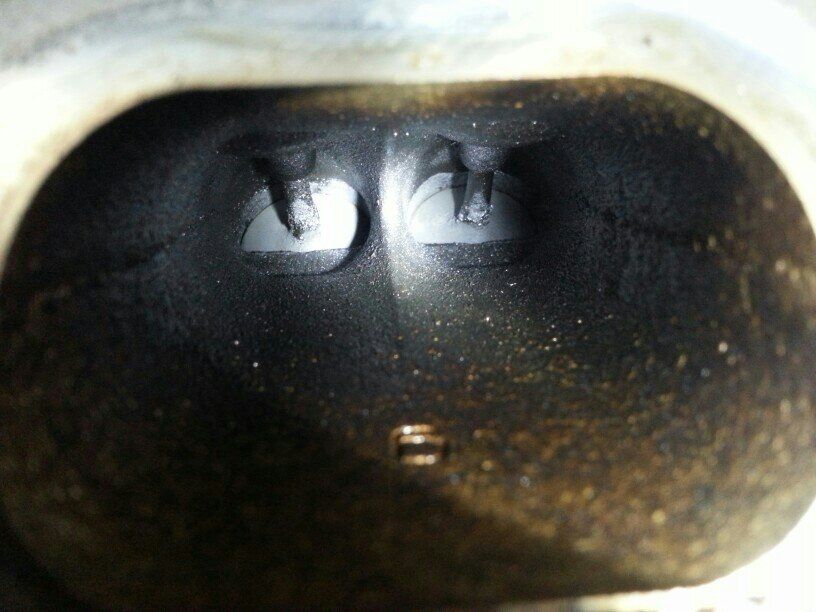
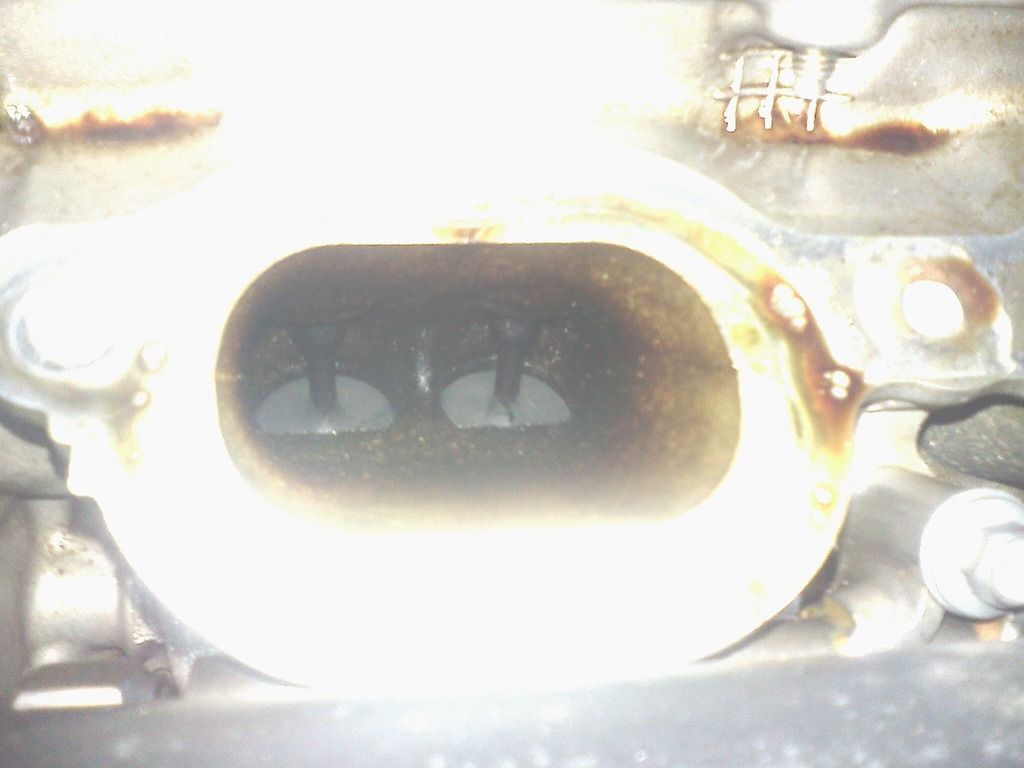
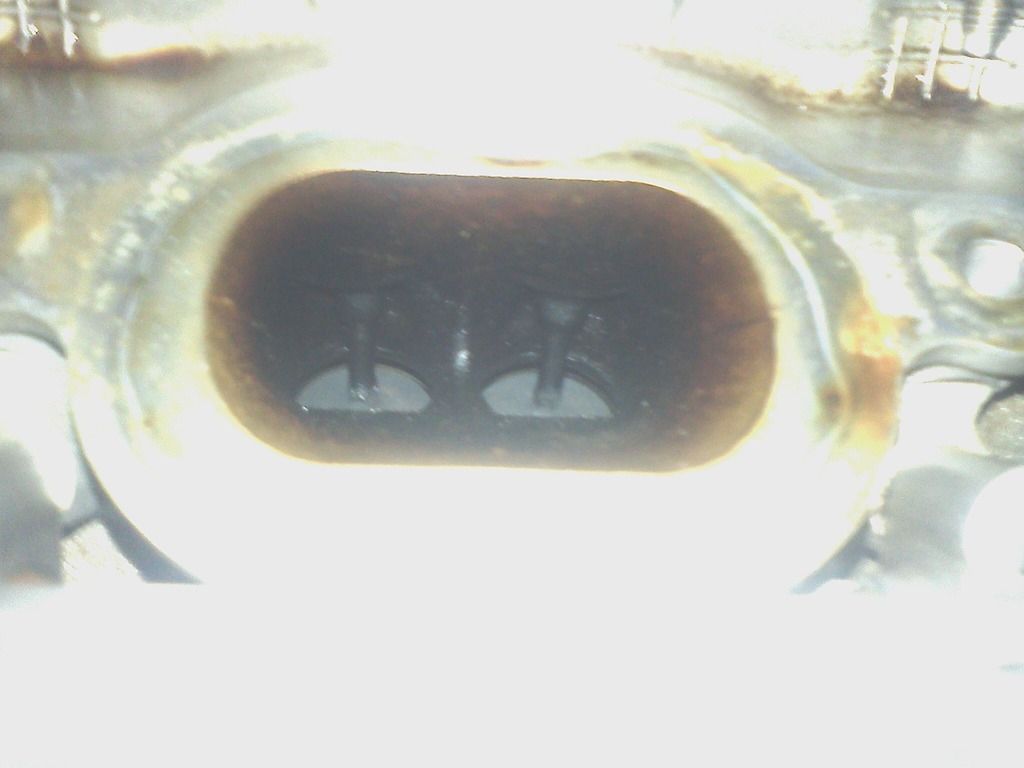
And after cleaning manually:
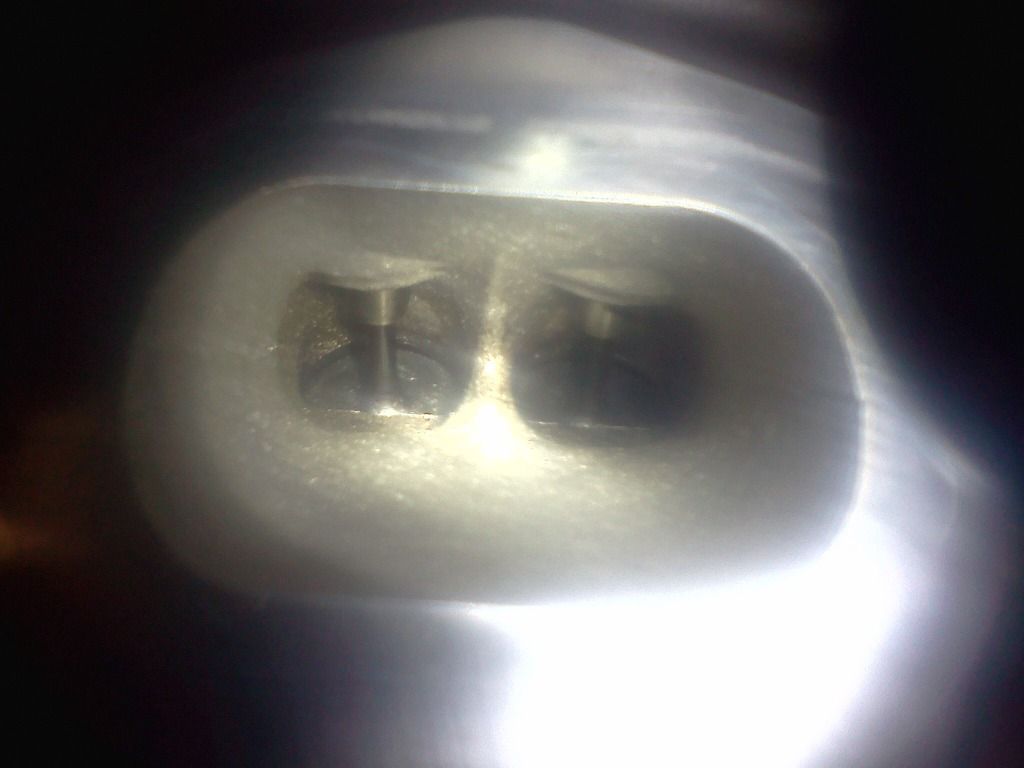
This was at app. 30k miles, and normal for the ecoboost which has probably the least severe build up of any modern GDI's we have examined. But this we attribute to the excessive water ingested due to the flaw in the design of the PCV system allows this to accumulate unlike GM where it is evacuated properly:
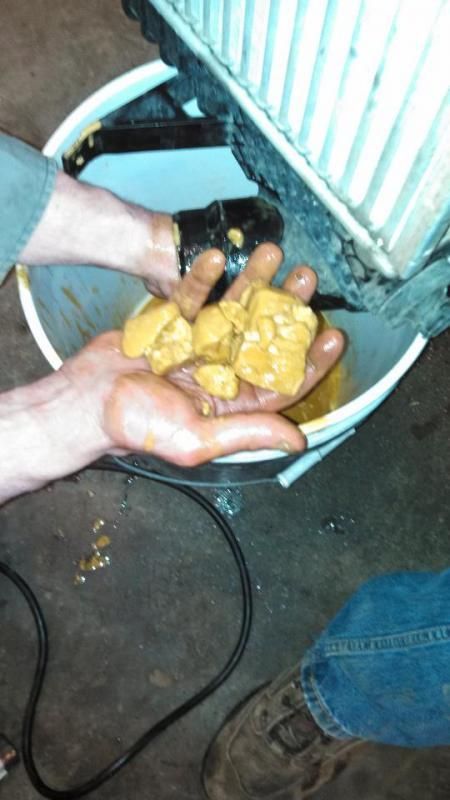
In fact, I recently got the chance to drive a 2015 Mini Cooper S for a few days when mine was in for a suspicious tranny issue that turned out to be minor. It's suppoesed to be a second quicker to 60 but I couldn't feel that much difference from mine. It felt slightly quicker but wasn't significant. Plus, mine gets significantly better gas mileage than I was able to get with the '15 S - go figure. The '15 must weigh more, maybe or wasn't broken in enough?
Anyway, mine doesn't burn any signifcant oil between oil changes - I've never have to add any between changes during the life of the vehicle and I check it frequently.
As I said, my experience . . .
Anyway, mine doesn't burn any signifcant oil between oil changes - I've never have to add any between changes during the life of the vehicle and I check it frequently.
As I said, my experience . . .
Have a manual cleaning done and see for your self, or better yet, dyno before the cleaning, have performed and dyno after to show:
This is the average mini valve at app 50k miles we see, and that is during tear down:
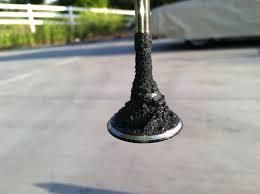
The before and after dyno with app. 20k miles on this one were pretty much across the board improvement:
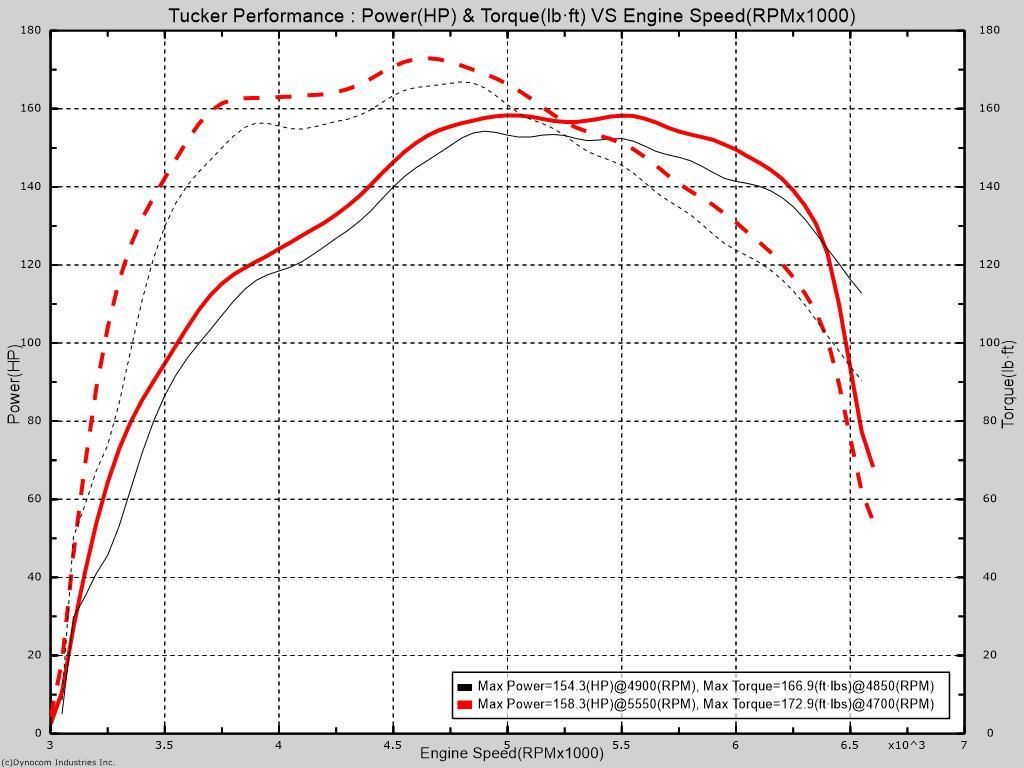
We study the mini's quite a bit here as they are among the worst offenders with the Ford ecoboost among the least. The mini's are so easy to disassemble as well.
I would really like to see either of you actually take off your IM on your mini and take some close up pics and post. In the dozens we have examined, even with low lies on they have always been far more severe than several other engines brands. It would be a surprise to find one that was not severely coked.
Thanks in advance!




 Unless there is nothing to see, looks clean to me..
Unless there is nothing to see, looks clean to me..

